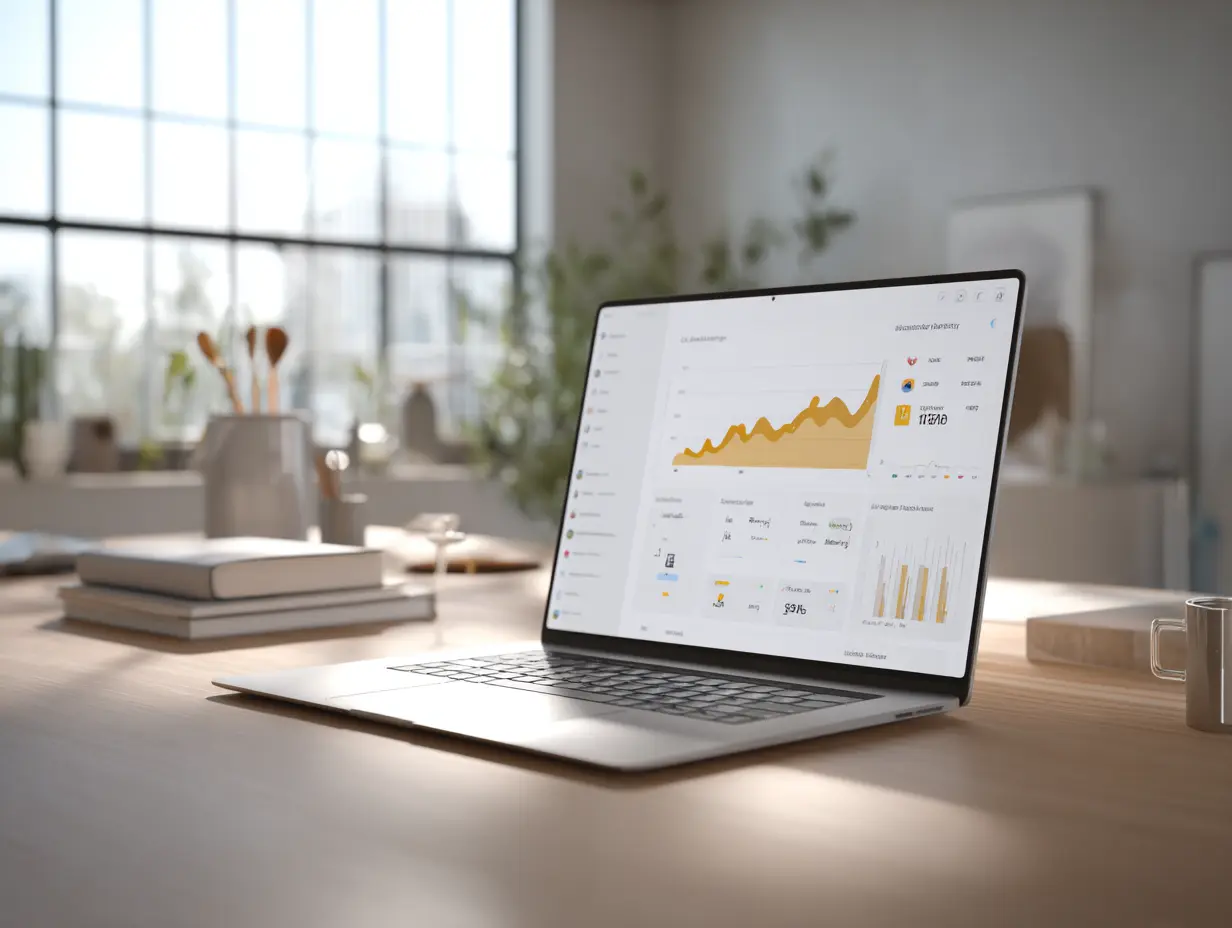The Ultimate Guide to Holiday Push Notifications for eCommerce
The holiday season is the most crucial time of the year for eCommerce stores. Consumers’ spending jumps significantly, and getting your piece of the pie is a great way to generate momentum (and cash flow) going into the new year.
This guide will explain everything brands need to know to utilize push notifications, one of the most efficient and cost-effective communication channels, in their marketing over the holiday season. We’ll run through some general tips and best practices for push notifications, specific strategies to follow during the Christmas period, and then share some specific examples of push notifications to send.
Keep reading to learn how to make this holiday season (and every holiday season to follow) a success for your brand.
Holiday Season Shopping Stats: a Trillion-Dollar Pie for Retailers
It’s not exactly breaking news that people spend more money during the holidays. But just how much?
Some estimate that holiday sales amount to 20 percent of retailers’ total annual sales. Currently, holiday retail sales in the US total more than $950 billion, and are projected to reach $1 trillion soon.
Nearly one-quarter of Americans spend over $1,000 in the holiday season. 45% spend more than $600.
There’s a lot of money to be had here, each year a bigger share of which goes to eCommerce, with an increasing number of people preferring to shop online than in-person.
And of those people, many are gravitating towards mobile. During Cyber Week 2023, more than half of all online sales came on mobile.

This is a big reason why push notifications should be a core part of your marketing strategy. They’re mobile-friendly, as well as being cheaper and more effective than email and SMS.
The personal, direct nature of push notifications helps you stand out in a day where so many brands are competing for consumers’ attention.
We’re sharing these statistics to impress upon eCommerce brands the importance of getting your holiday marketing strategy right.
Do it right, and you’ll be in line for a big windfall, and momentum you can use to invest in and grow your business in the new year.
Do it wrong, and it could be the beginning of the end for your business, as you fall behind competing brands who nailed the holiday season.
Foundational Principles of Push Notification Marketing
Push notifications can be a huge driver of engagement and revenue for eCommerce brands, if you do them right.
To help, we'll share everything you need to know about marketing with push notifications. Later in the guide, we'll look at some specific ways to approach push notification marketing during the holidays, but first some general best practices to follow in regards to push marketing, no matter the time of the year.
Keep your copy concise
You have limited space to work with in a push notification, so make the most of it. You generally have a little as 40 characters to get your message across and convince the user to click through. Practice writing effective micro-copy that fits the medium.
Use clear CTAs
Your push notifications should have a call to action, clearly telling the user what action you want them to take next. This should be clear, specific, and again, concise.
Create a sense of urgency
Once you have the user’s attention, you need to encourage them to act immediately, before their attention strays and they forget about your message.
This is true throughout all forms of marketing, but particularly important for push notifications. If a user is interested, but doesn’t feel a sense of urgency about what you send, they’ll often dismiss the notification, where they’ll most likely forget about what you sent.
Adding something like “act now” to your copy, or better yet, setting a deadline for the user (e.g. “save X% today only”, “this deal ends tomorrow”) will foster this feeling of urgency and result in more clicks/conversions from your notifications.

Create a sense of intrigue
Another important feeling to convey is one of intrigue, or making the user want to know more.
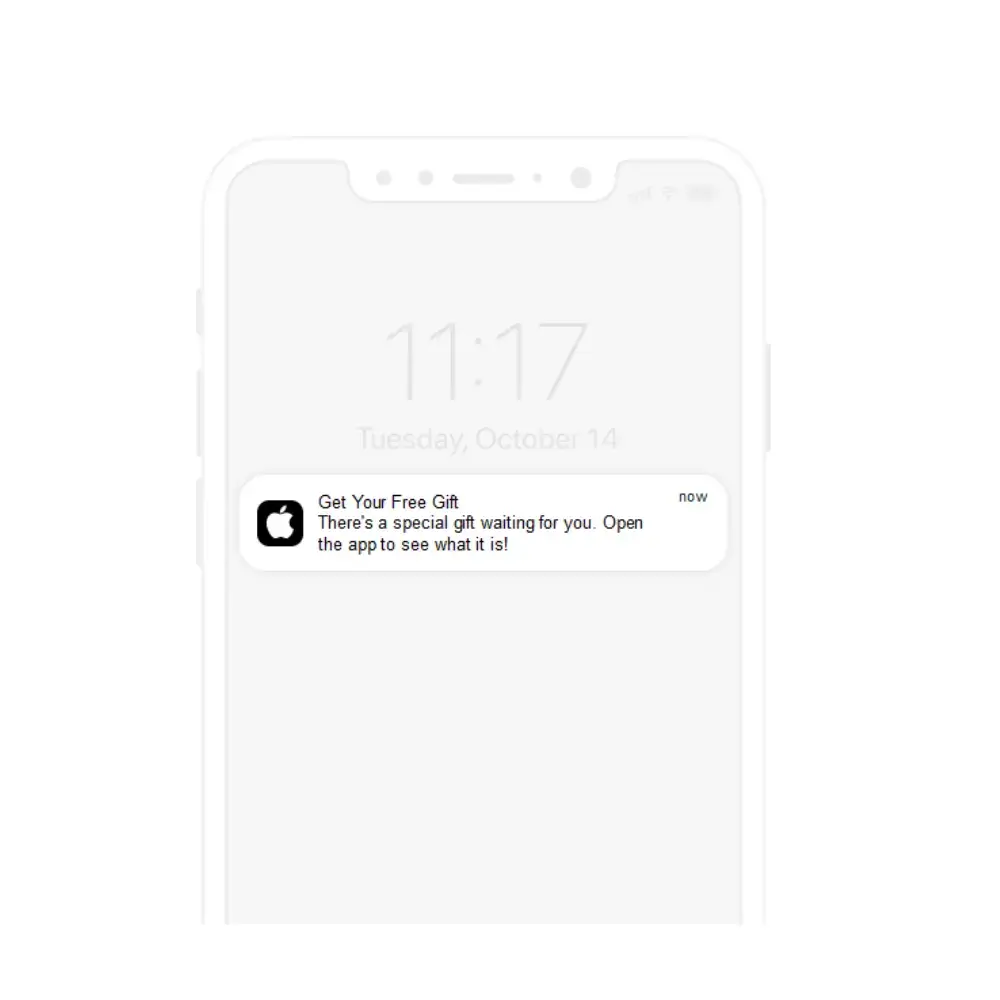
Your goal when sending promotional push notifications is to get the user to click through to your site/app and give you their attention.
Though you might show the user a great offer, which definitely interests them, it’s easy for it to slip their mind and not lead to anything, especially with push notifications, where the bulk of the user’s attention may be elsewhere.
Yet if you stoke their curiosity, you can get them to click through from the notification to learn more, where you’ll be able to capture and hold their attention easier.
It’s working along the same lines as the concept of urgency - you want the user to act now, before other things fill their headspace and push your brand to the side.
You’ll want to find the right balance between conveying enough information to get the user interested, while keeping them wanting more, to where they’re willing to move deeper into your sales funnel.
Send at the right time
Timing is important for push notifications. As we established when discussing the importance of urgency and intrigue, it’s really easy for someone to dismiss a push notification, tell themselves they’ll check back on it later, then forget about it.
For eCommerce brands, you want to send notifications at a time when the user has the free time to browse your store and buy something.
Though the hours of 12-2pm have been shown to have the highest CTR for push notifications, it’s hard to give a one size fits all answer for this. The best time to send push notifications depends on the industry, but can also differ from user to user.
The best way to figure out when to send push notifications is to test. You’ll want to experiment with different timings and find out what seems to work best for your user base.
Personalize your push notifications
One key tip to make your push notifications more effective is to use personalization. Personalization has been shown to lead to as much as four times higher open rates.
Use whatever information you have about your user to send them hyper-relevant, personal, targeted push notifications.
Here are some ideas to personalize your notifications:
- Use their name in the copy (Kate, get 50% off on your next purchase)
- Use their location (These products are popular with shoppers in Columbus)
- Use purchase history to send targeted product offers (Get this pair of shoes to go with the glasses you just bought)
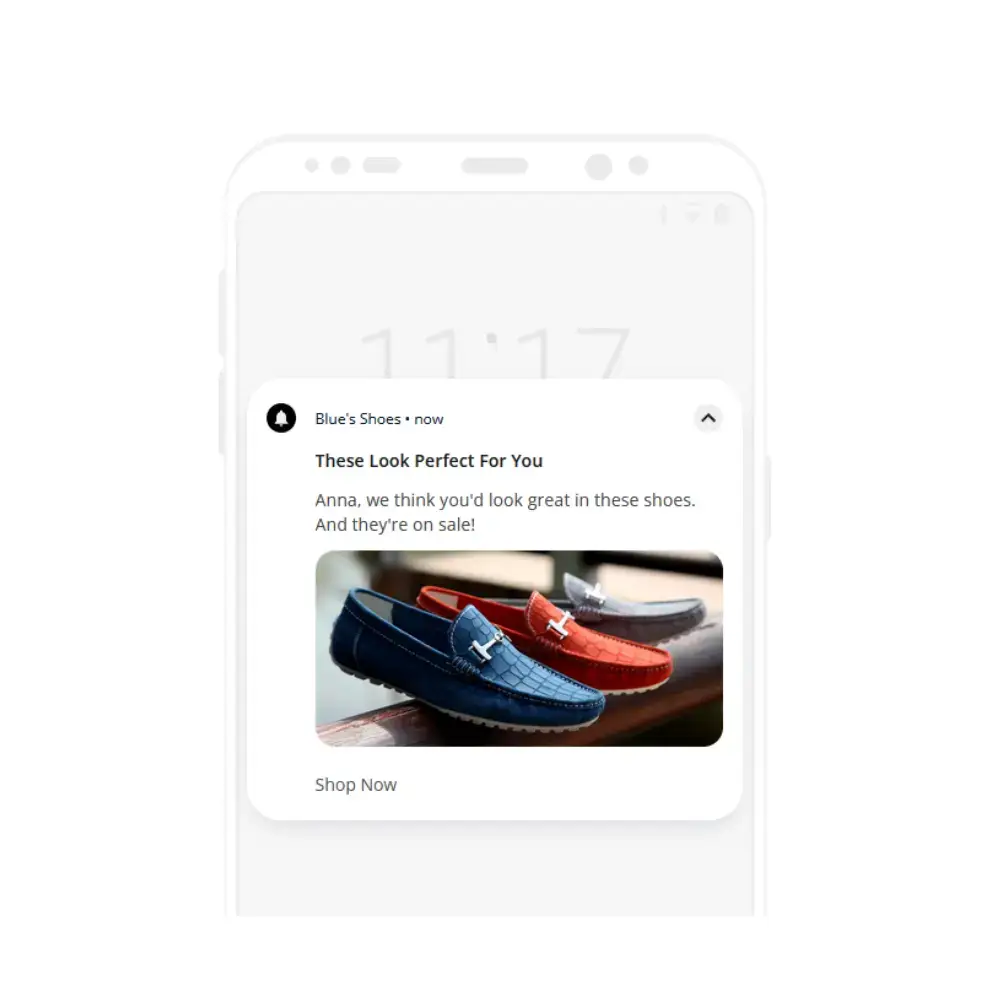
Of course, you don’t always need to call out personalization in the copy. Using someone’s name is a great way to make an offer feel like it’s personally crafted for that customer, but personalization is just as effective when the user doesn’t know it’s happening.
This can mean segmenting users based on their interests, and sending different offers or messages to each segment.
It could also mean personalizing the timing of your messages. If you have a lot of data to work from, you might be able to segment users into those who respond most to messages at night, and those who respond during the day.
You can get really granular with personalization. The more personalized your push notifications are, the better your results are likely to be.
A/B test and use what works
Ultimately, we can give you a hundred tips and best practices for sending push notifications, but this advice won’t hold true for everyone. The only way to know for sure what works and what doesn’t is to test.
You’ll want to run A/B tests for different variables, such as:
- Different types of copy
- Different CTAs
- Rich content vs plain text
- Timing
- Different promotional methods (e.g. $ off vs % off vs BOGO)
Find out what works, file away your findings, and stick with what produces the best results.
Push Notification Strategies to Make Your Holiday Marketing Campaigns a Roaring Success
The holidays are a great time to run promotions and market to your customers via push notifications. Unfortunately, every other brand is doing the same, creating a lot of competition for your customers' attention (and their money!)
Here are some tips to help you get better results during the holiday season from your push notification campaigns.
Lean into the holiday spirit
First, take advantage of the excitement surrounding the holidays, and really lean into the Christmas/holiday spirit.
Sprinkle ho ho hos, Christmas-themed emojis and images that conjure the holiday spirit throughout your marketing campaigns and push notifications.
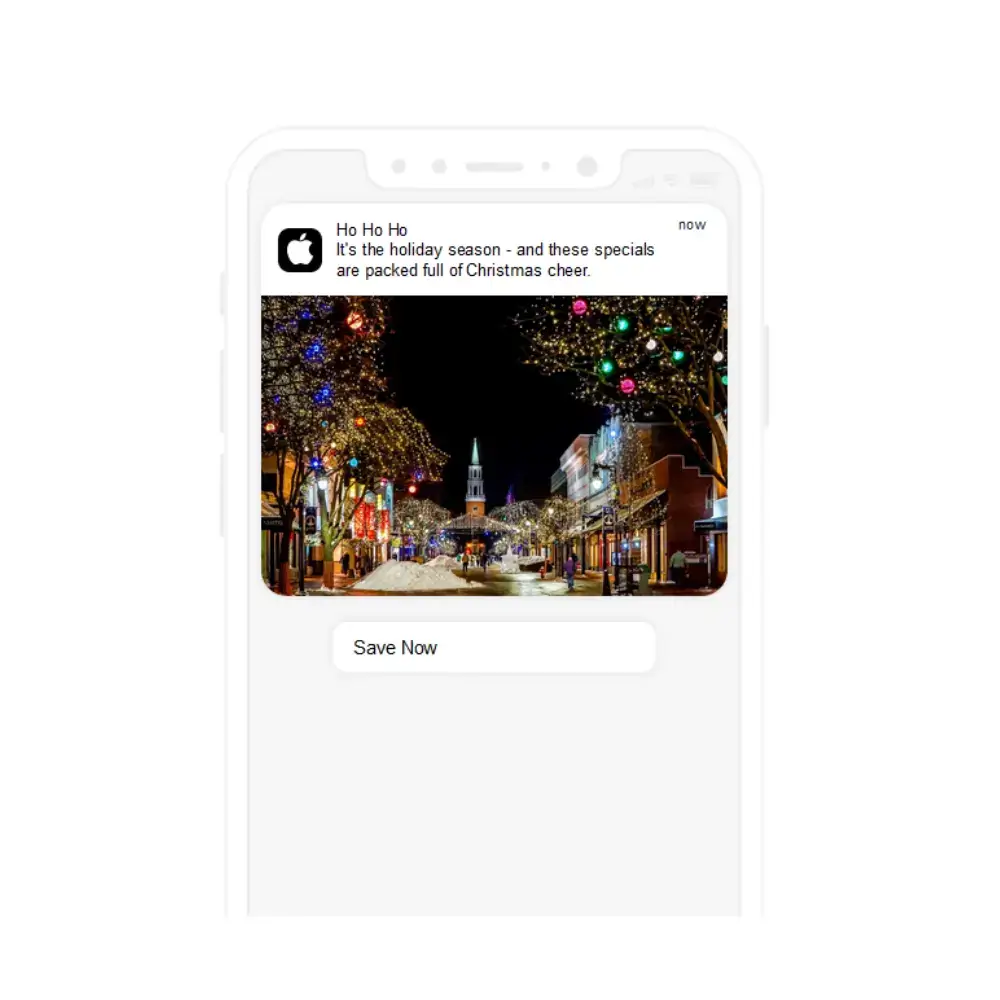
The holidays come with a lot of positive emotions, and tapping into this emotion with your customers will result in a lot more engagement.
Use past data to understand what works
The best way to know how to shape your holiday marketing campaigns is to look back on past years.
If it’s not your brand’s first holiday season, you should have insights as to what worked and what didn’t in years past.
Replicate approaches that worked well, and steer away from approaches that didn’t produce results.
Create specific segments for holiday shopping
During the holidays, a lot of your customers aren’t necessarily shopping for themselves; they may be shopping for gifts for others.
With that in mind, you might want to switch up your personalization for the holiday season. Instead of segmenting users based on all their past purchases, try looking back on what people purchased during the holidays in previous years.
It could happen that you have a treasure trove of data on what your customers generally buy as gifts, allowing you to serve hyper-targeted product recommendations.
When to start your holiday marketing campaigns
There’s a lot of debate over when the ideal time is to start marketing for the holiday season.
Some brands start as soon as Black Friday-Cyber Monday is over. Yet some start earlier, keeping in mind that many consumers do their holiday shopping earlier, often taking advantage of Cyber Week sales.
You can generally feel comfortable starting any time from the start of November onwards.
Don’t leave it too late; if you only start marketing for the holidays in the middle of December, a lot of people will have already done all their holiday shopping.
However, you don’t want to use that as a reason to stop your holiday marketing campaigns early. There are still a lot of people out there who leave it to the last minute and don’t finish their holiday gift shopping until a few days before Christmas.
This is a great opportunity for brands to send a “last minute gift ideas” push notification deep into December to capture a revenue boost from these shoppers.
Use the holidays to deepen customer relationships and brand loyalty
Don’t see the holiday shopping season as just a money grab. It can be an opportunity to build brand loyalty and cultivate deeper customer relationships, which pay off big in the long run.
This could mean offering your customers a great deal in which you make little to no profit, or a free gift with no strings attached.
It could simply mean sending a push notification to wish your customers a happy holiday season and a prosperous new year.
Cut down on non-promotional notifications
Though you may send a last-minute “happy holidays” notification, in general, if you regularly send non-promotional push notifications (e.g. sharing educational content), you might want to slow or pause these notifications during the holidays.
Most brands will want to send a lot of promotional notifications during the holidays. If you send these, along with your regular, non-promotional notifications, your users can easily get overloaded.
This could lead to negative effects, such as your push notifications getting ignored, or users disabling push notifications altogether.
Finding the sweet spot where you message your customers regularly, but not too much, is important. Save space on your push notification schedule for campaigns with a high return during this time.
Utilize abandoned cart notifications
Abandoned cart notifications are super effective, and a must-use no matter the season. But it’s particularly important to run abandoned cart campaigns during the holidays.
On average, 70% of eCommerce shopping carts are left abandoned, without the user finishing their purchase.
You’ll likely have more traffic during the holidays, which means a higher total number of abandoned carts to try and reclaim.
Realistically, you may actually have a higher abandonment rate during the holidays, as shoppers deal with more distractions and competition for attention is at a premium.
Automated abandoned cart notifications are simple to set up, and can net you a big increase in revenue that would otherwise be lost.
Run non-discount promotions to stand out
Typically, your default marketing strategy during the holidays will likely be to promote discount promotions to your audience.
This is not a bad way to go - a discount is an attractive, dependable incentive to boost sales.
But if you want to stand out, consider doing something different. Aampe found that 81% of eCommerce push notifications contain a discount.
During the holidays, 95% of eCommerce push notifications contain a discount.
If you’re offering a discount, you’re going to blend in with the competition. If you can raise the curiosity of your customers with something else - such as a free gift, giveaway, bundle, product recommendations or gifting guides - you could be able to stand out from the crowd.
Send product recommendations
As just mentioned, product recommendations can be one way to do push notifications a little differently to other retailers. It can also be a really powerful way to provide value to your customers, and give them something they want more than just a discount.
For some, money isn’t as much of a concern during the holiday season as the stress of wondering what to get for their loved ones.
This presents a big pain point that you can solve. If you can recommend the perfect gift, you save a lot of work and a lot of stress for the customer, and will likely close the sale - potentially even at full price.
This is not just a hypothesis - push notifications work. Aampe studied 1.2 million messages, sent to 800,000 users, and found that messages with product recommendations drove 300% as many clicks and 289% more checkout events.
A report by Salesforce found that product recommendations drove 7% of visits to eCommerce sites, but drove 24% of orders and 26% of revenue.
Combining product recommendations with personalization, as we discussed earlier, can be the backbone for a holiday marketing campaign that takes your revenue to a whole new level.
21 Push Notification Examples for the Holiday Season
If you’re looking for inspiration for how to send push notifications to your customers during the holiday season, here are 21 examples for you to work with.
Discount
The most straightforward way to run a promotion during the holidays is to offer a discount to your customers - and push notifications are the ideal medium to let your loyal shoppers know about it.
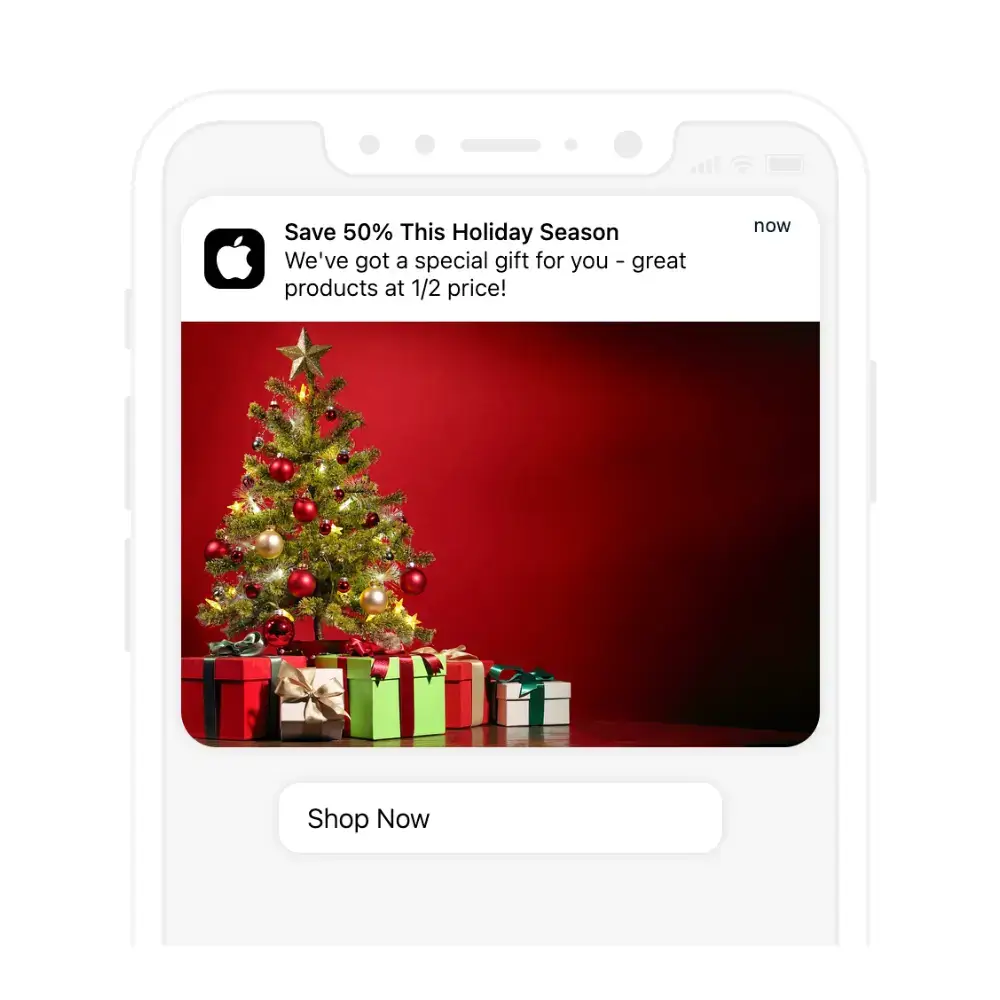
Free shipping
If you want to offer something a little different, run a free shipping promotion. The idea of free shipping just hits different, even if it’s the same or less value than a straight up monetary discount.
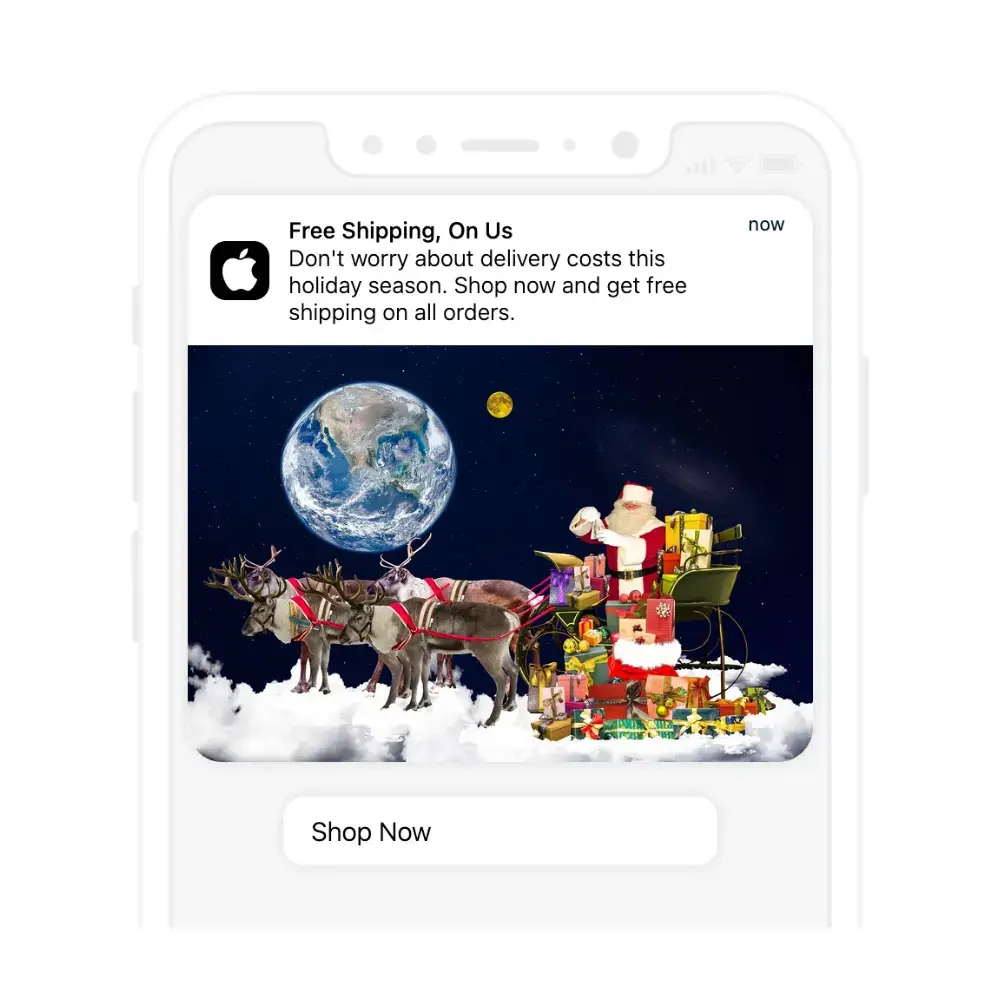
BOGO
Another promotion idea is a Buy One, Get One (BOGO) promotion. These promotions are super effective for consumable products, as they can easily lead to repeat purchases and an increase in customer lifetime value (CLV).
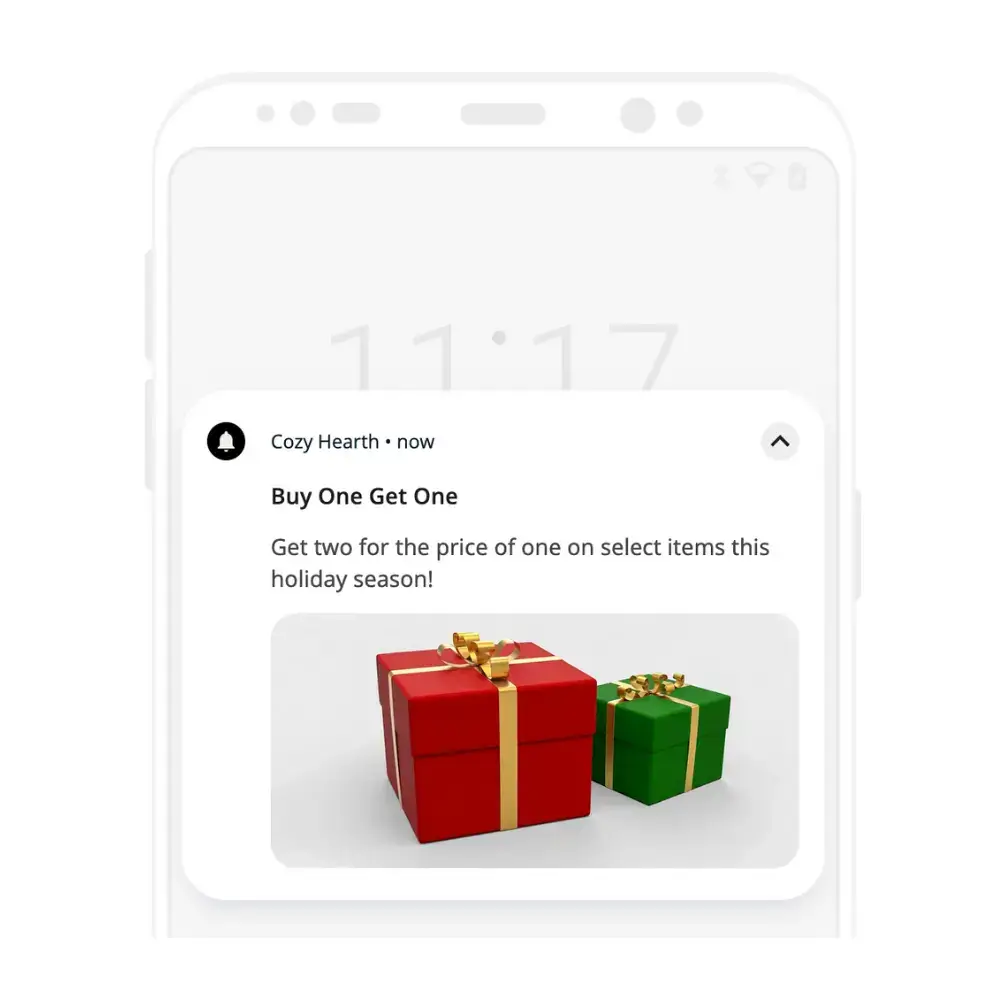
Abandoned cart
There’s no question, you should be sending abandoned cart push notifications over the holidays. Just set up your automation, let it run passively, and you can easily recover 10-15% of orders that would otherwise have been lost.

Flash sale
Flash sales are great because they automatically create a sense of urgency, encouraging the customer to act immediately, before the deal expires. Push notifications are particularly well-suited for flash sales, as they’re generally seen by the customer right away, allowing you to run very quick sales (as little as a few hours) and maximize urgency.
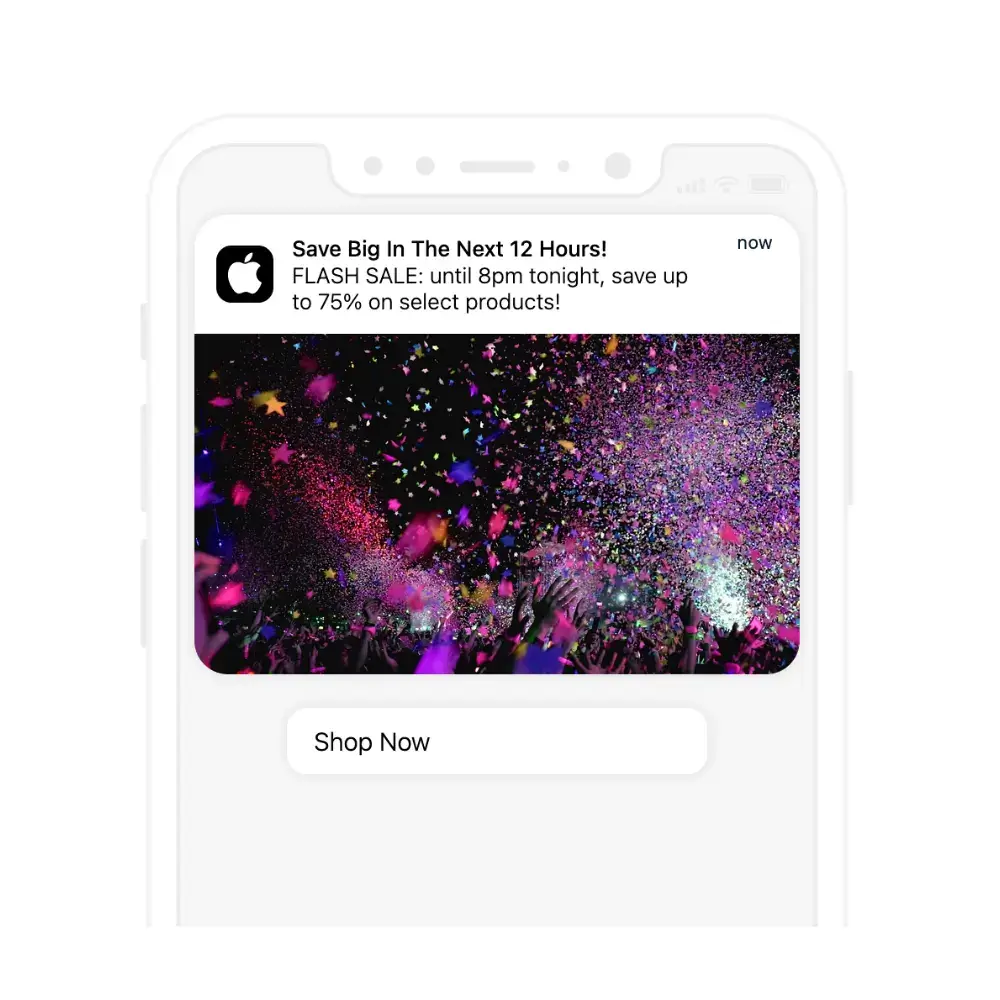
Deal of the week
A deal of the week promotion is another way to stimulate urgency and scarcity (deal of the day works great too). The best part is that you can personalize this for different customer segments, showing hyper-targeted deals to each customer.
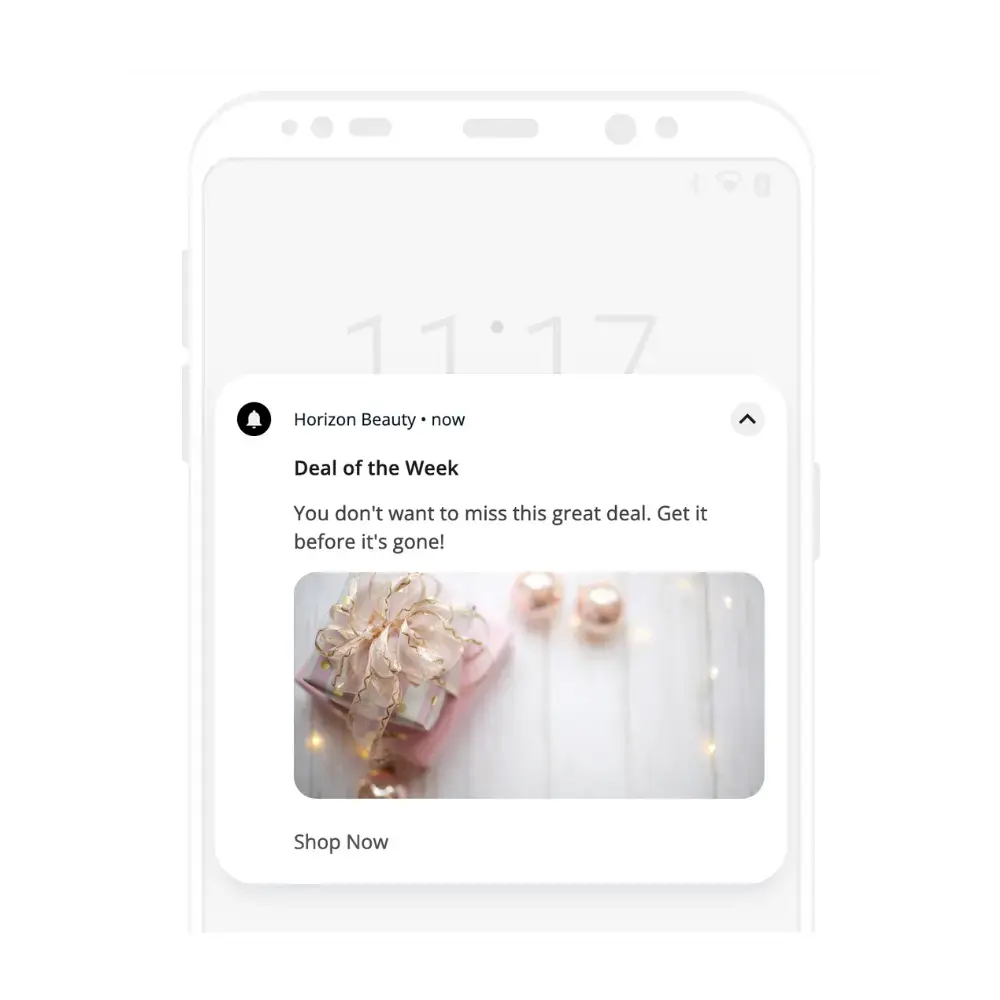
Bundle offer
Bundles are a tried and tested way to increase average order value. You can offer customers extra value if they buy several products together, or just cross-sell complementary products can capture more revenue from each buyer.
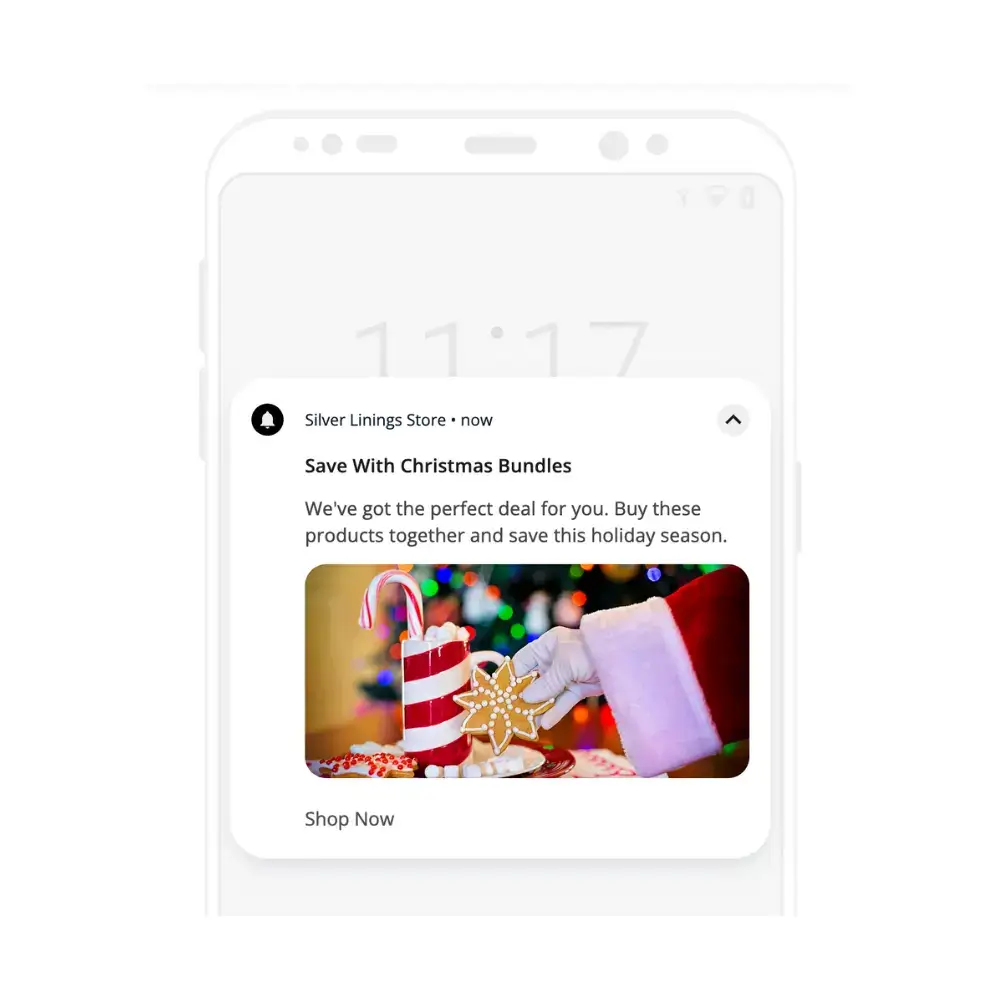
Giveaway/contest
Giveaways and contests tend to deliver an excellent ROI, as well as generating a sense of excitement and boosting visibility for your brand. You can enter all customers in the draw to win a prize, run a “spin to win” type of contest, or get creative. This is an excellent idea if you want to stand out from all the competition who just offer a straight discount.
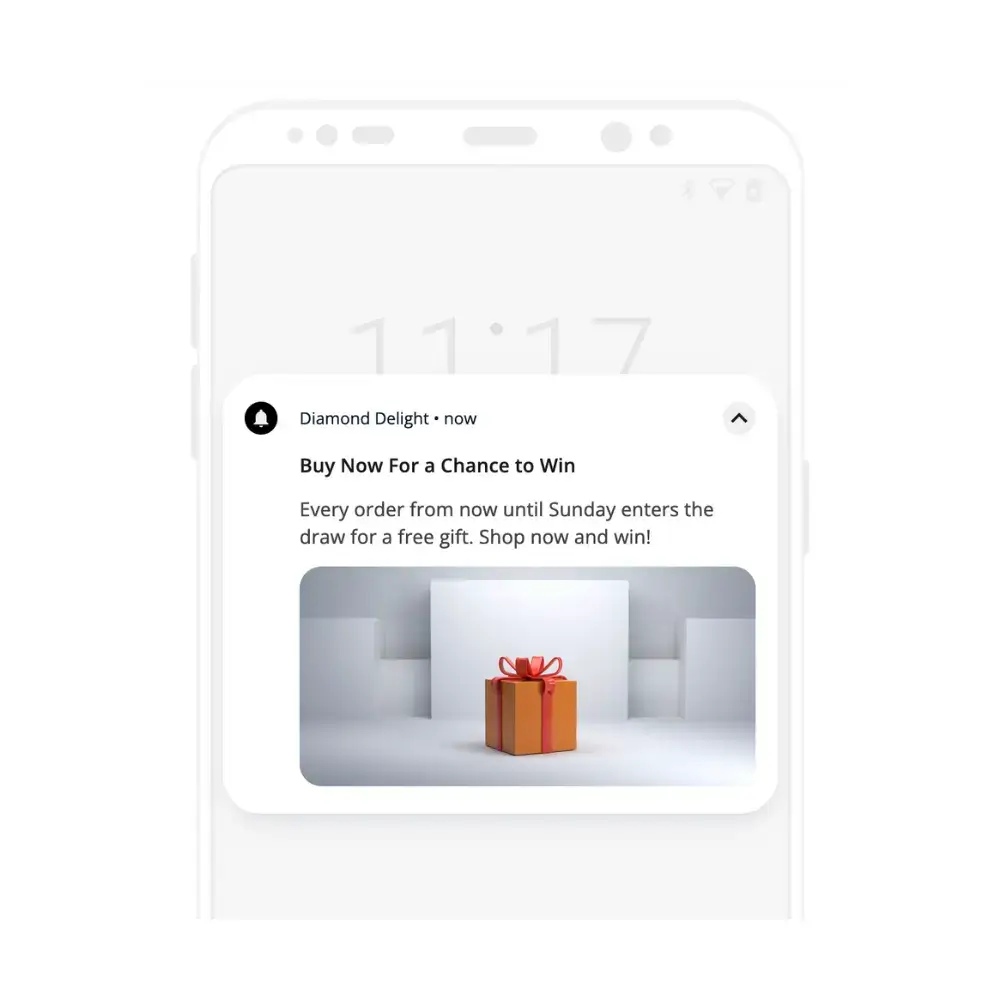
Free gift
A free gift during the holidays is the perfect token of appreciation for your best, most loyal customers. It could be a gift with purchase (make any purchase and you give them something for free), or even a gift with no strings attached, just to say thanks.
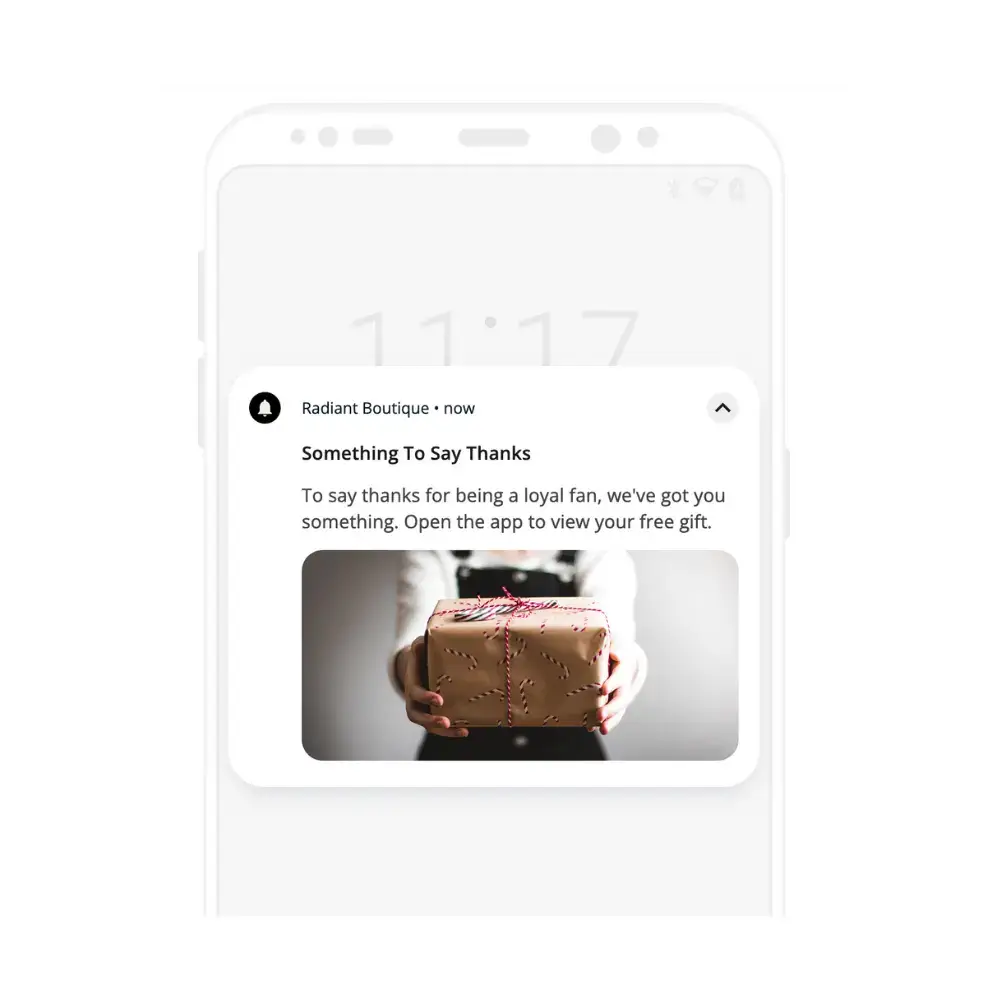
Holiday gift guide
The one thing many of us want more than a discount during the holiday season is inspiration for what to buy for our loved ones. A gift guide, offering different ideas for different members of the family, costs basically nothing to create, yet delivers a ton of value. You could also sweeten it with promotions for your top gift ideas.
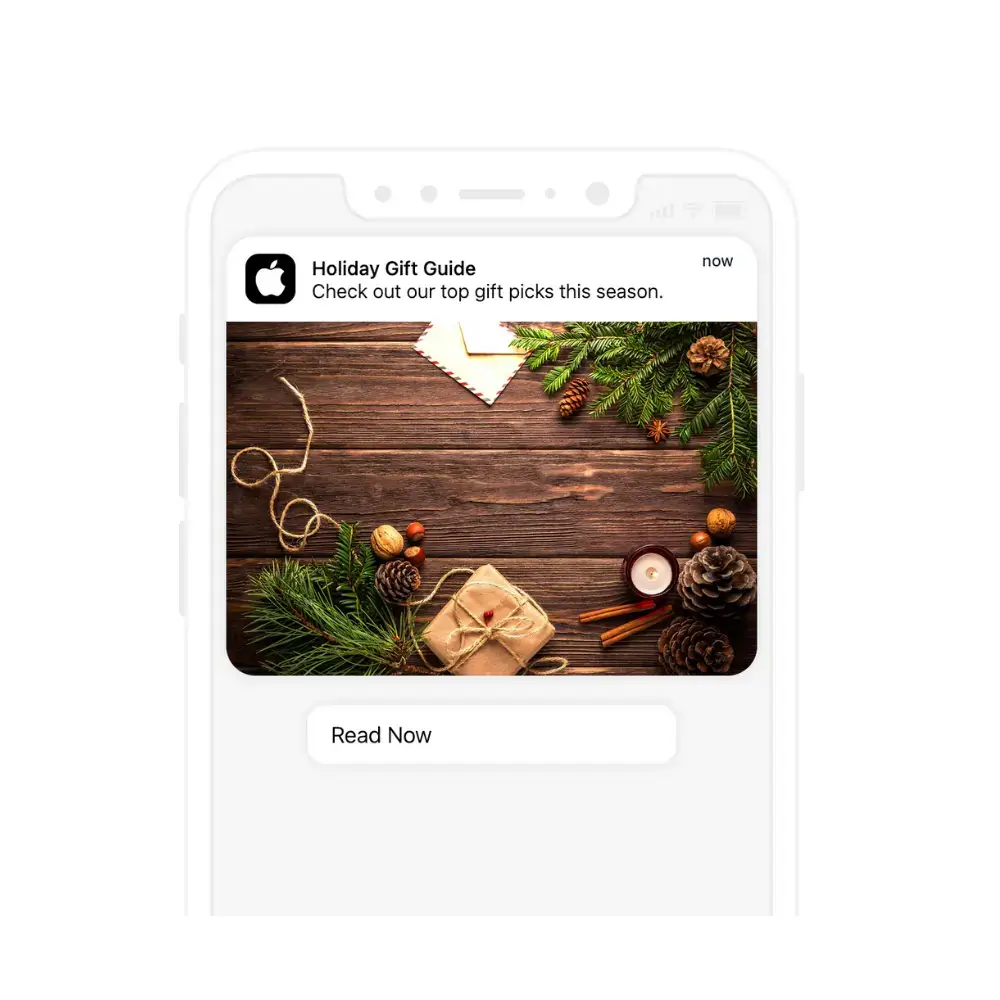
Personalized gift recommendations
If you’ve got the data, you can get personal with your gift recommendations. If you know that certain customers are likely to be shopping for their parents, brother, sister, spouse or kids, you can make their life a lot easier, and close the sale as a result.
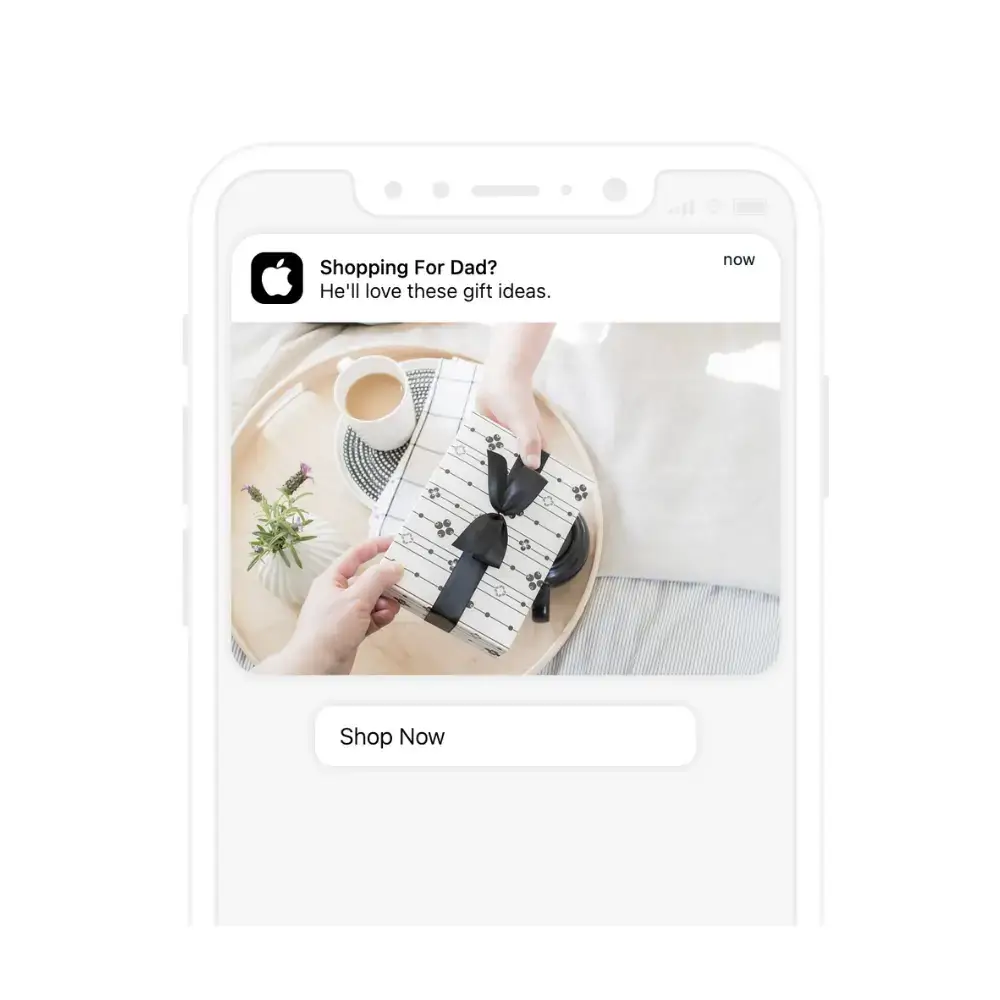
Gifts under $X
Another great idea to get more specific with gift ideas is to recommend products under a certain amount, helping your customers stick within their desired budget.

Stocking stuffers
Stocking stuffers are a perfect opportunity to up-sell and increase revenue with small, cheap, quirky products that are a good fit for the family’s xmas stockings.
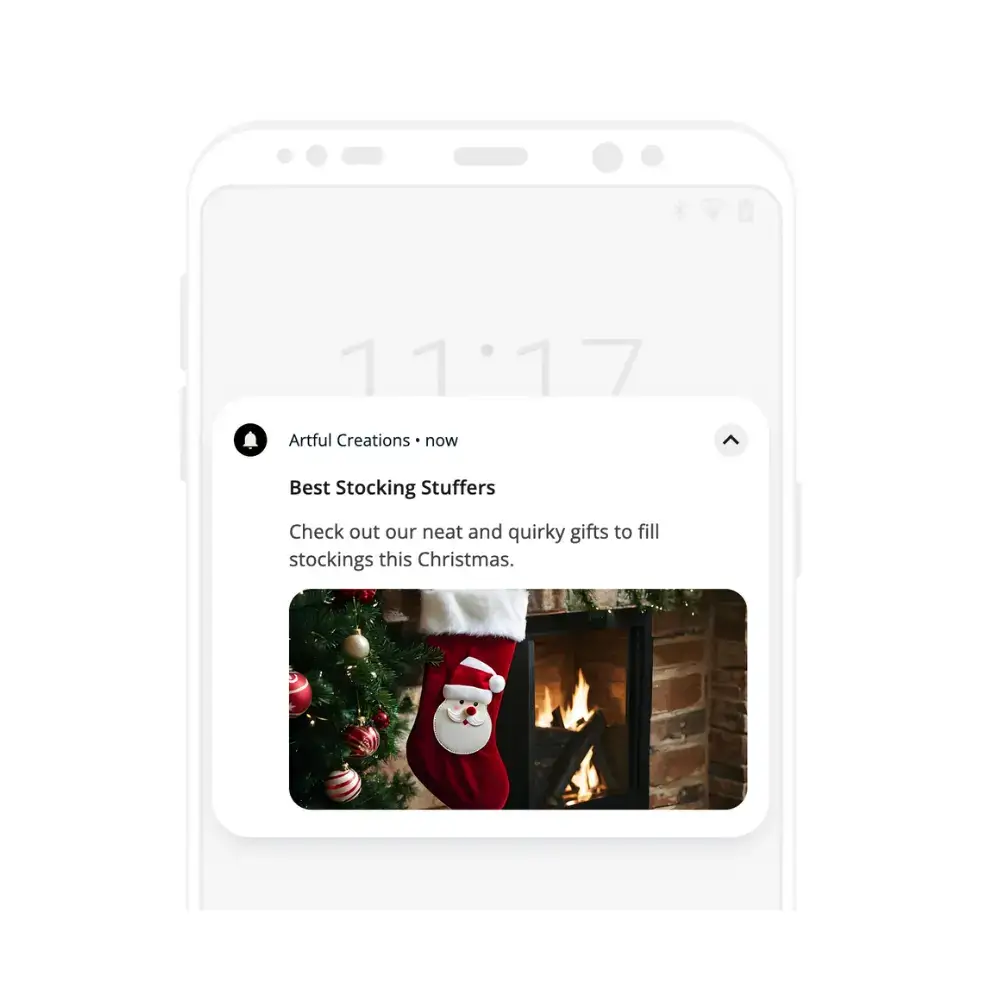
Gift ideas for ____
Create gift guides targeted at different individuals - “Gift Ideas for Dad”, “Gift Ideas for Mom”, “Outdoorsy Gift Ideas”, “Gift Ideas for Sport Lovers”. Pair this with personalization for amazing results.
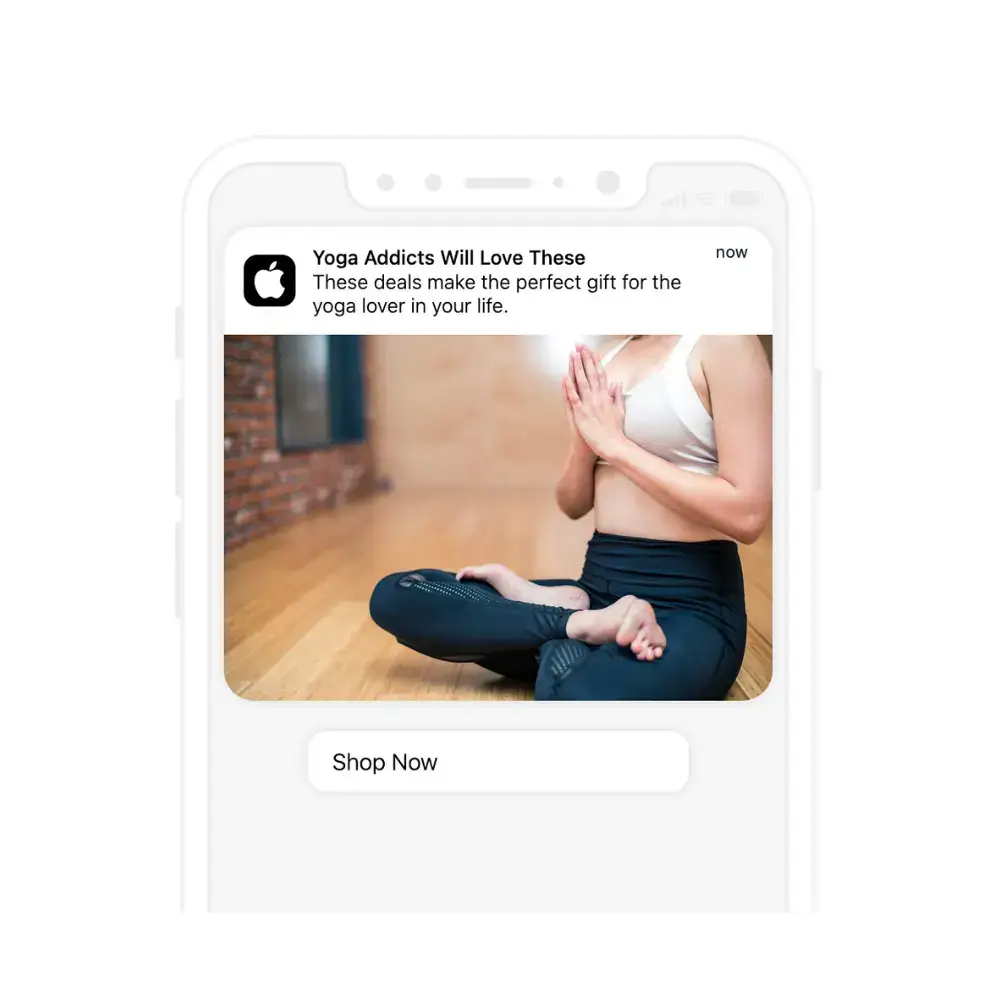
Gift cards
For the people who are impossible to buy for, there are always gift cards. If you offer gift cards, send a push notification to your users reminding them about this as a great fallback if they can’t decide on the perfect gift idea.

Last minute gift ideas
A “last minute gift ideas” notification is a great way to capture revenue from those who leave their holiday shopping late. These people are likely to be scrambling to find something for their loved ones before it’s too late, making them more likely to take you up on your suggestions.

Last minute promotion
You can also run last minute promotions, and let money do the talking for those who are still shopping for gifts and want to keep their Christmas shopping on-budget.
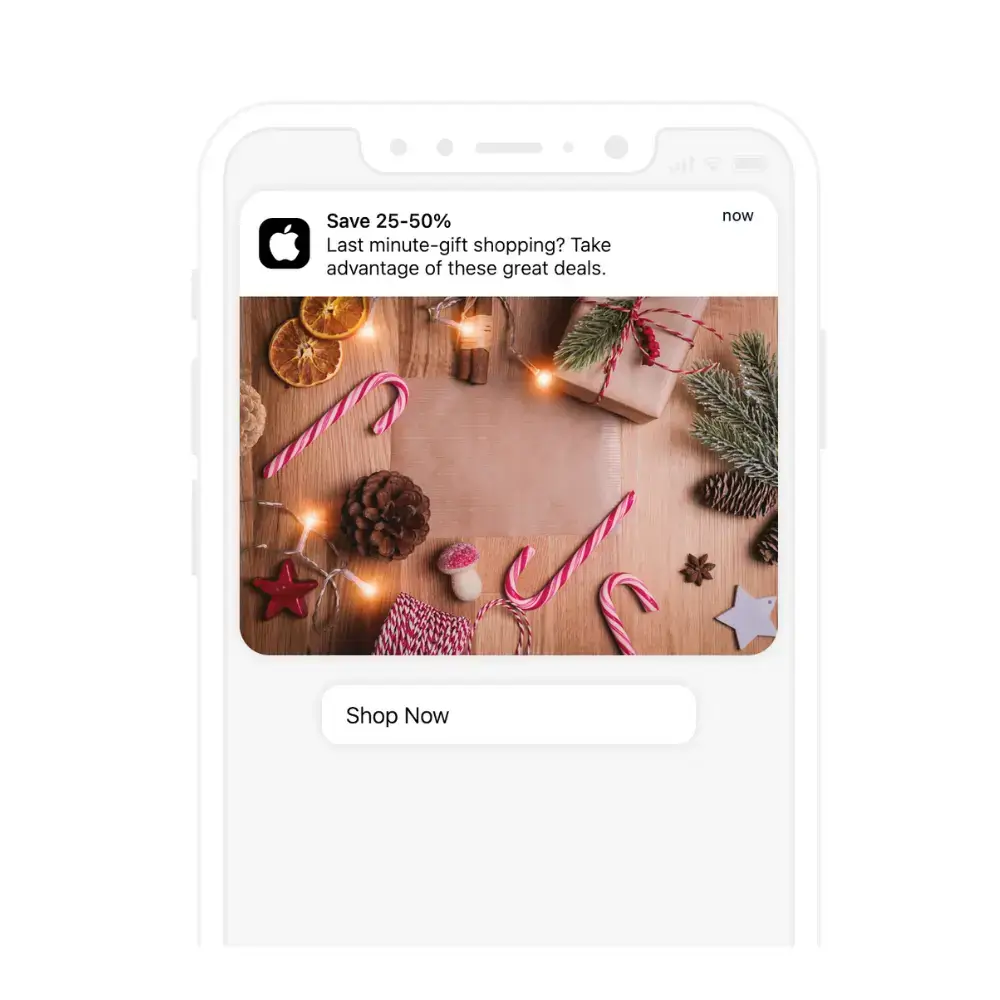
Stock alert
Use stock levels to your advantage, by creating an air of scarcity that encourages people to act fast. This could be a notification that certain products are running low on stock, pushing customers to buy before there’s none left, or a notification that products are back in stock, with the implication that stocks will only last for a limited time.
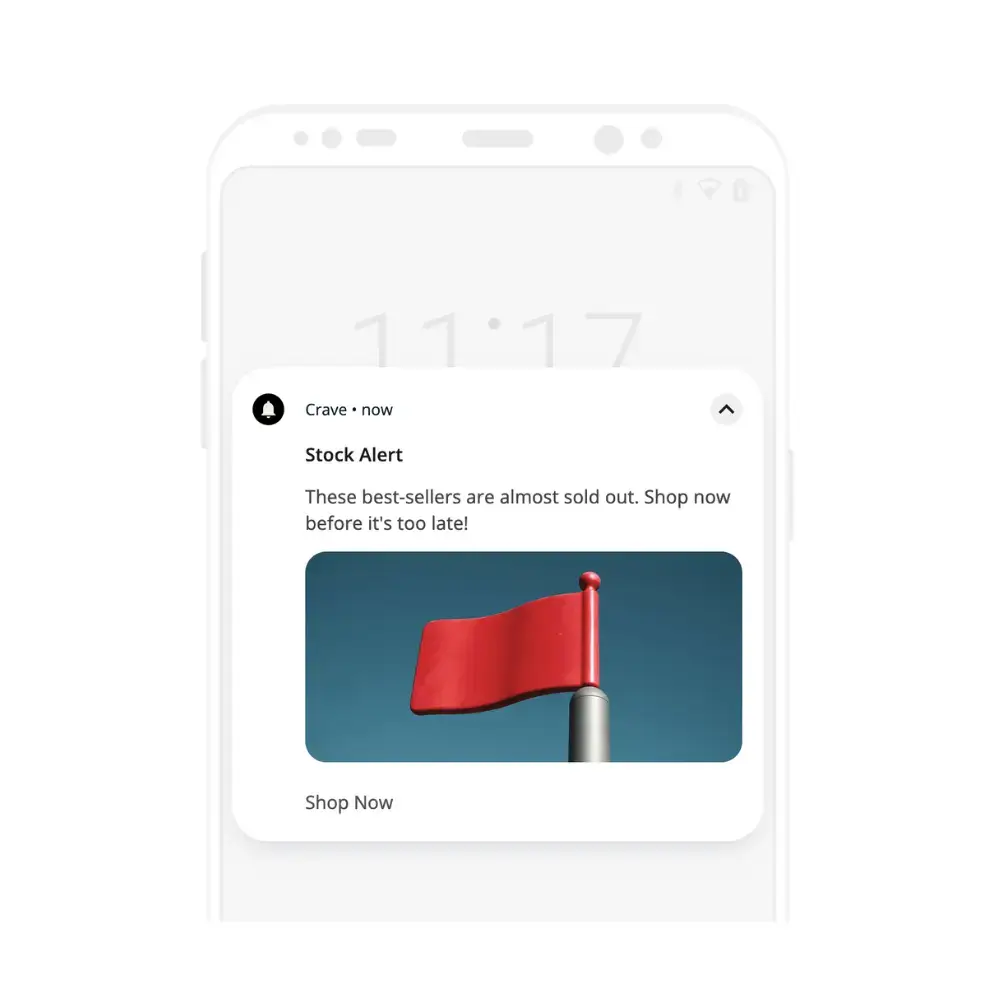
Christmas delivery schedule/holiday countdown
One of the biggest anxieties facing those who do their holiday shopping online is whether or not their gifts will arrive in time. Send a push notification telling customers that there’s still time to order a product and get it in time for Christmas, and use this urgency to drive sales.
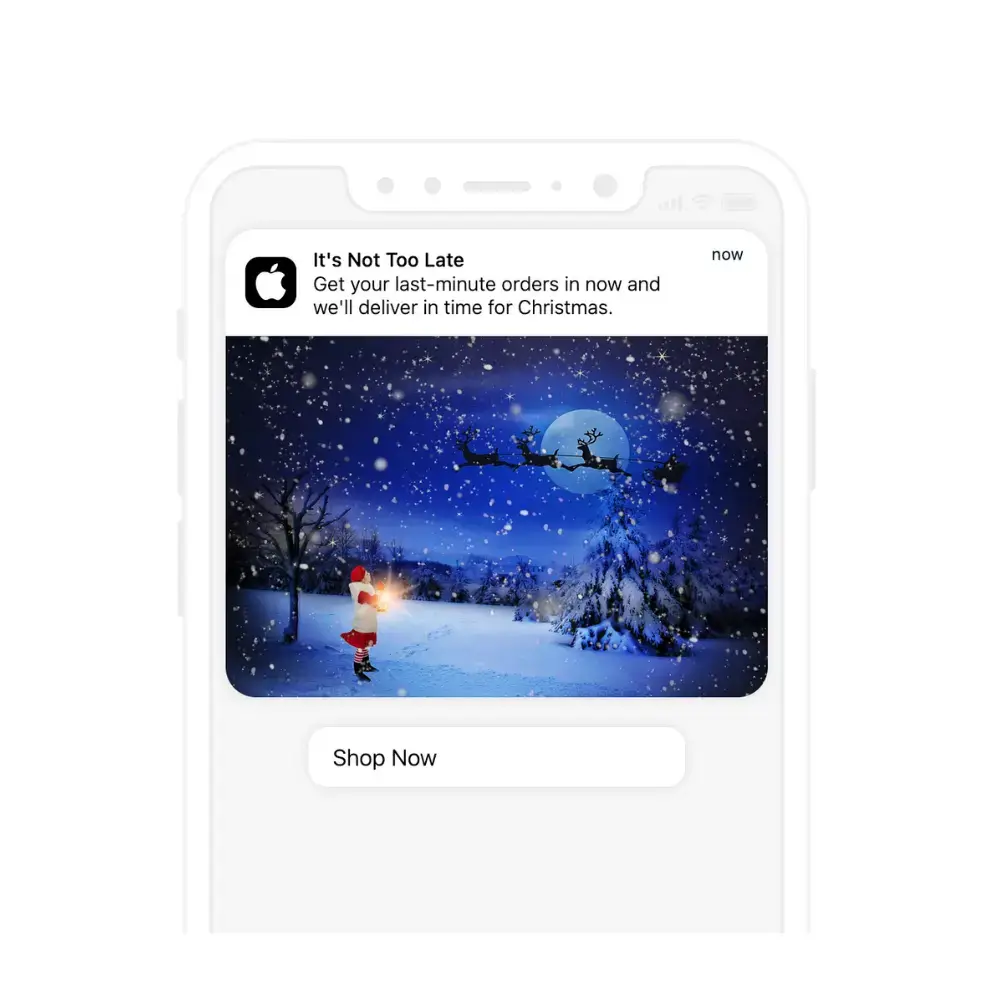
Shipping & delivery notification
Once someone’s made a purchase, they’ll still feel that anxiety over whether it’s going to arrive in time, up until the parcel lands on their doorstep. Put your customers at ease (and reduce the chance of people getting worried and canceling their order) by providing updates on the delivery status.
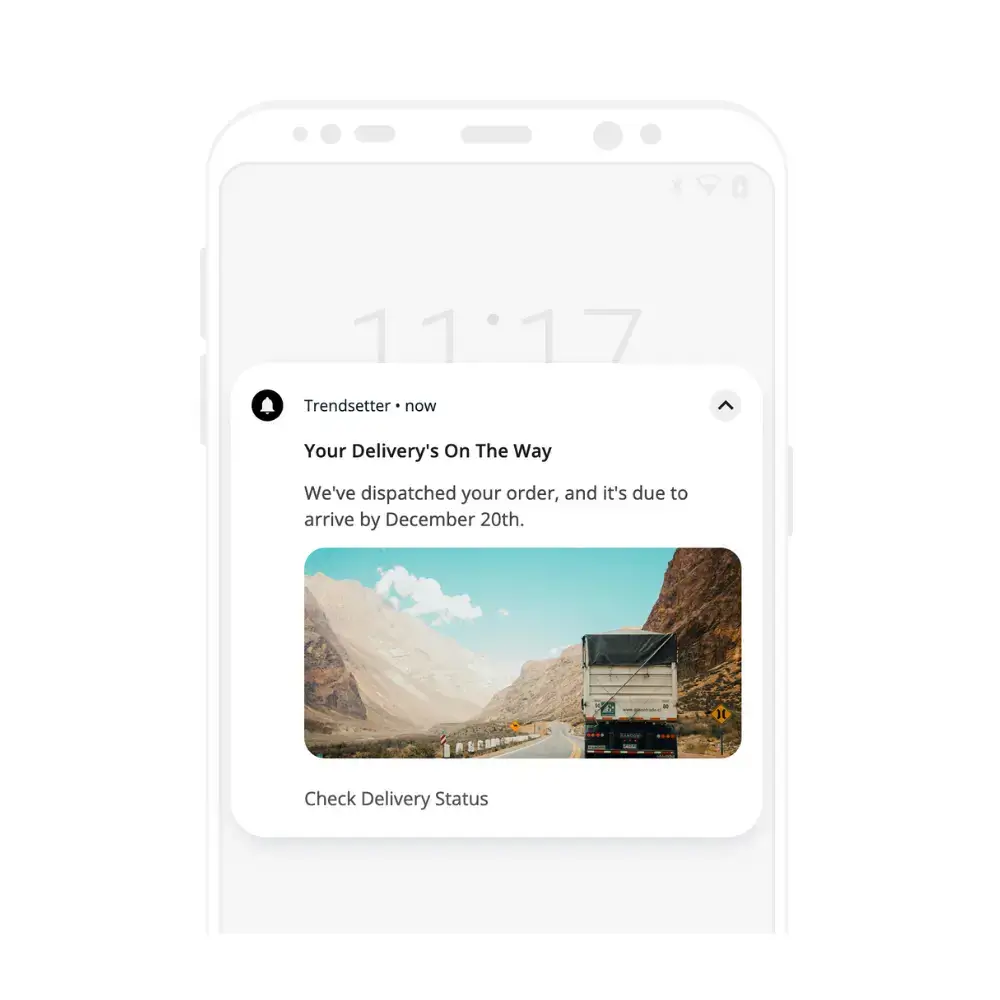
Thank you/happy holidays
Finally, this push notification requires little effort, no discounts, no free gifts or giveaways. Just a notification to say thank you to your customers and wish them a happy holidays.
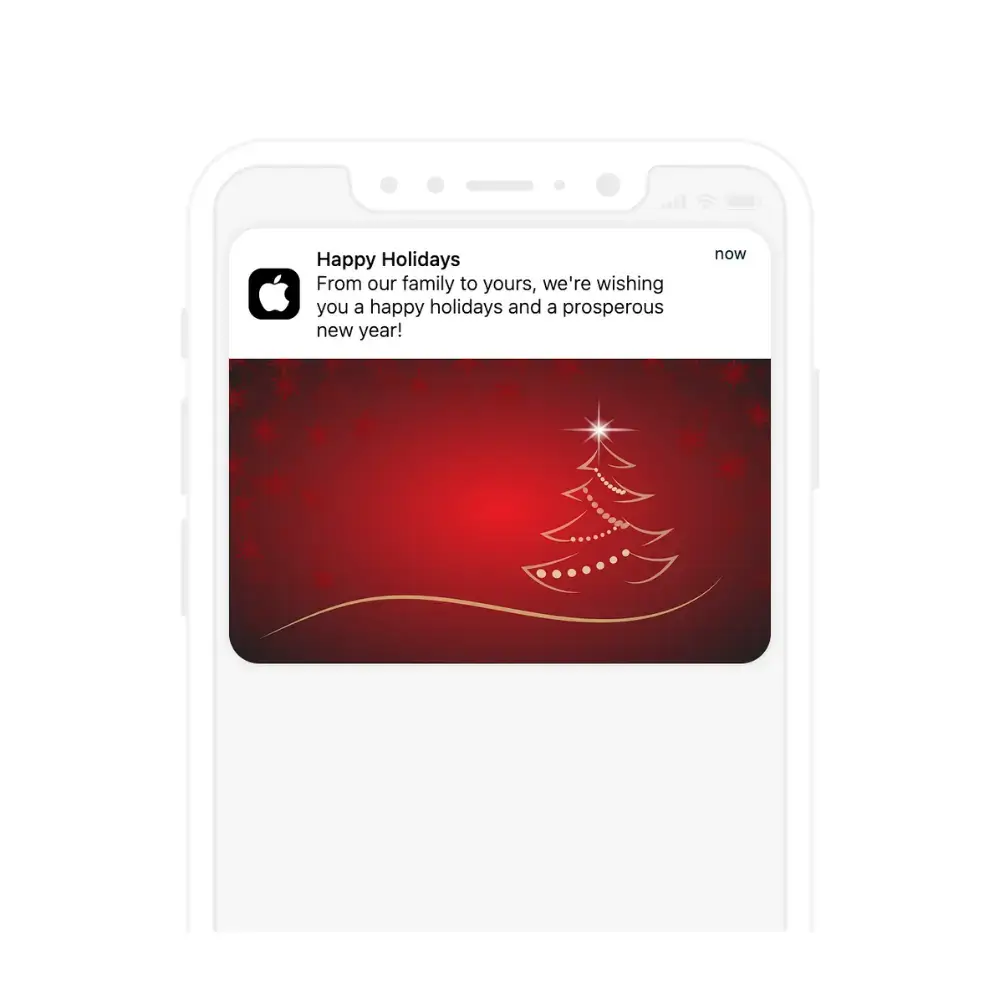
Mobile vs Web: How to Unlock the Full Power of Push Notifications
There are different ways to send push notifications. You can send push notifications on desktop via web browsers, on mobile via web browsers, or send mobile push notifications through your mobile app.
There’s no question, mobile apps give you the best use and full power of push notifications.
- Mobile is the ideal platform for push notifications, allowing you to reach your customers at any time, wherever they are.
- More than half of all Black Friday-Cyber Monday online sales in 2023 came on mobile, proving that mobile is becoming most peoples’ favorite way to shop.
- Apps allow you to reach all users on all devices (some browsers/operating systems don’t support mobile web push notifications).
- Apps give you more options for personalization and segmentation.
If your brand has an app, you’ll want to send your push notifications from the app.
If you don’t have an app yet, check out MobiLoud. MobiLoud lets you convert your eCommerce store into an app for a minimal investment in time and money, with no technical expertise required.

Our team handles everything for you, fully converting your website to native apps, complete with all your existing apps, integrations, plugins and features.
It’s fully synced with your web store, and requires little to no upkeep and maintenance from you, letting you benefit from an app store presence, plus the full power of push notifications, without major changes to your workflow.
If you want to level up your mobile revenue and build a retention machine, get started with a free preview of our app, or get in touch with us now and talk to one of our experts about how MobiLoud can help.
FAQs
Convert your website into a mobile app









